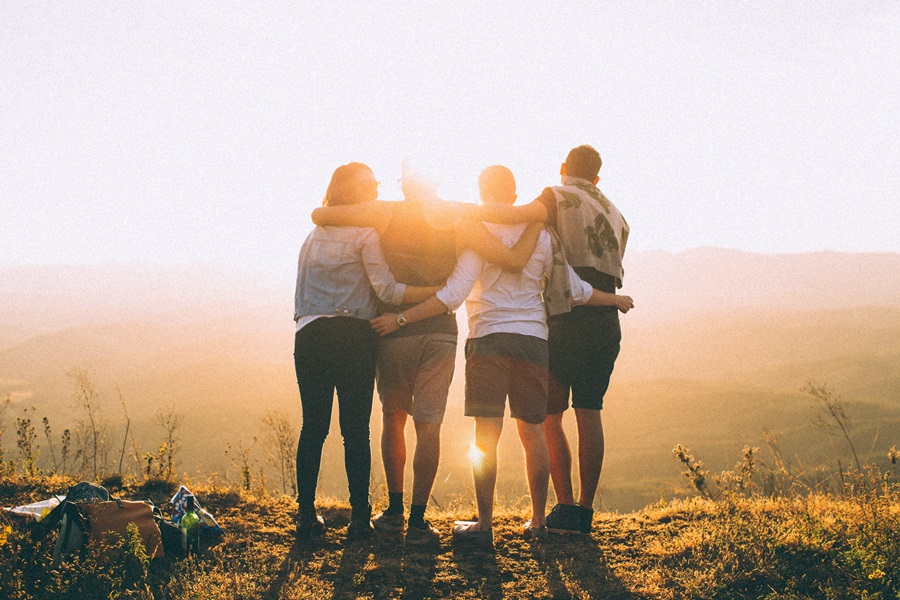Customers in Canada are shifting their preferences from physical goods to experiences, something we can easily see by looking at the four-stage evolution of the birthday cake. During the agrarian economy, mothers made birthday cakes from scratch, mixing farm commodities (flour, sugar, butter, and eggs) that together cost mere dimes. As the goods-based industrial economy advanced, moms paid a few dollars to Betty Crocker for premixed ingredients. Later, when the service economy took hold, busy parents ordered cakes from a bakery or grocery store, which cost ten times as much as the packaged ingredients. Now, parents neither make the birthday cake nor even throw the party. Instead, they spend few hundred dollars or more to outsource the entire process to Chuck E. Cheese or other such businesses that stage a memorable event for the kids - and throw in the cake for free.
Studies have found that spending money on experiences brings more lasting joy than spending it on things. Experiences are also more shareable in the form of pictures and stories on social media, which is important to younger generations.
While the preference for experiences has been growing, market factors like the pandemic and the high rate of inflation have contributed to further speed the shift. Consumers are increasingly focusing on their health and mental well-being and have become discerning about how they use their time and money. The lifestyle that many consumers have started living or plan to live is one that heavily prioritizes experiences over physical goods.
Several factors are driving a shift in buying preferences, including a relaxation of pandemic restrictions, growth in millennial spending power, and the arrival of high inflation:
- High inflation is causing consumers to rethink their purchases.
The rising cost of goods and services is impacting Canadians’ purchasing ability across income levels. Consumers are trading down to cheaper alternatives and buying fewer non-essentials, with an intent to save their hard-earned dollars for the future. Some of the areas where consumers are cutting back include clothing, beauty and cosmetics, and big-ticket items. They are also looking for private-label replacements for fresh and packaged food.
- But the lifting of restrictions is leading people to spend on experiences.
Lockdowns during COVID-19 had a negative impact on people’s physical and mental being. But with restrictions lifted now, Canadians continue to prioritize their health and wellness and spend on experiences they missed out on during lockdowns, with travel and eating out being the most common.
For example, we saw a huge spike in travel after restrictions were lifted in February 2022, despite high jet fuel prices. According to Statistics Canada, air transportation prices increased 8.3 per cent between February and March 2022. Airlines around the world have also boosted capacity in recent months. For example, Air Canada recently flew more than 100,000 passengers in one day for the first time since the beginning of the pandemic.
- Millennials are fueling the experience economy (but not by themselves).
According to Statistics Canada, millennials now account for one third of the working age population in Canada, and their increased buying power is driving the growth of the experience economy. They are increasingly spending time and money on things like concerts, athletic pursuits, and cultural institutions.
Millennials may be leading the experiences-first trend, but they aren’t the only group indulging in them. As Boomers are entering retirement, they are focusing on their well-being and prioritizing relationships and experiences over things. Clearly, this isn’t a trend that will be going away anytime soon.
- Companies are following suit.
Not surprisingly, companies are also shifting their business models to accommodate changing consumer preferences for experiences, with even some product-based industries moving with the times. For example, AirBnb has introduced AirBnb Experiences, which are in-person or online activities that immerse guests in a local expert’s unique world. Luxury brand LVMH has acquired a luxury travel company Belmond to respond to wealthy shoppers’ shifting tastes from high-end goods to more opulent experiences. Many malls are also moving from product-focused retail shopping to experience centers, offering activities for kids and adults to enjoy.
Put simply, even if your brand is not in an experiential space, your customers very likely are. Many are looking beyond functionality and seeking out brands that deliver something that is more than the sum of its parts. They want to take away an experience that builds a greater connection and a more lasting impression. And it’s time to figure out how to deliver exactly that.
Kantar’s wide suite of services enables brands to understand the functional and emotional needs of their market, effectively target the most valuable consumer segments, and keep track of brand’s progress compared to competition. Kantar’s experts in Customer Experience (CX) can also help you understand the strength of customer relationships, identify key pain points, and prioritize investments on what matters the most to customers.
Discover how Kantar's 2022 BrandZ Most Valuable Canadian Brands have built meaningful difference with consumers. To learn how you can better understand today's consumers and their shifting needs, get in touch.

